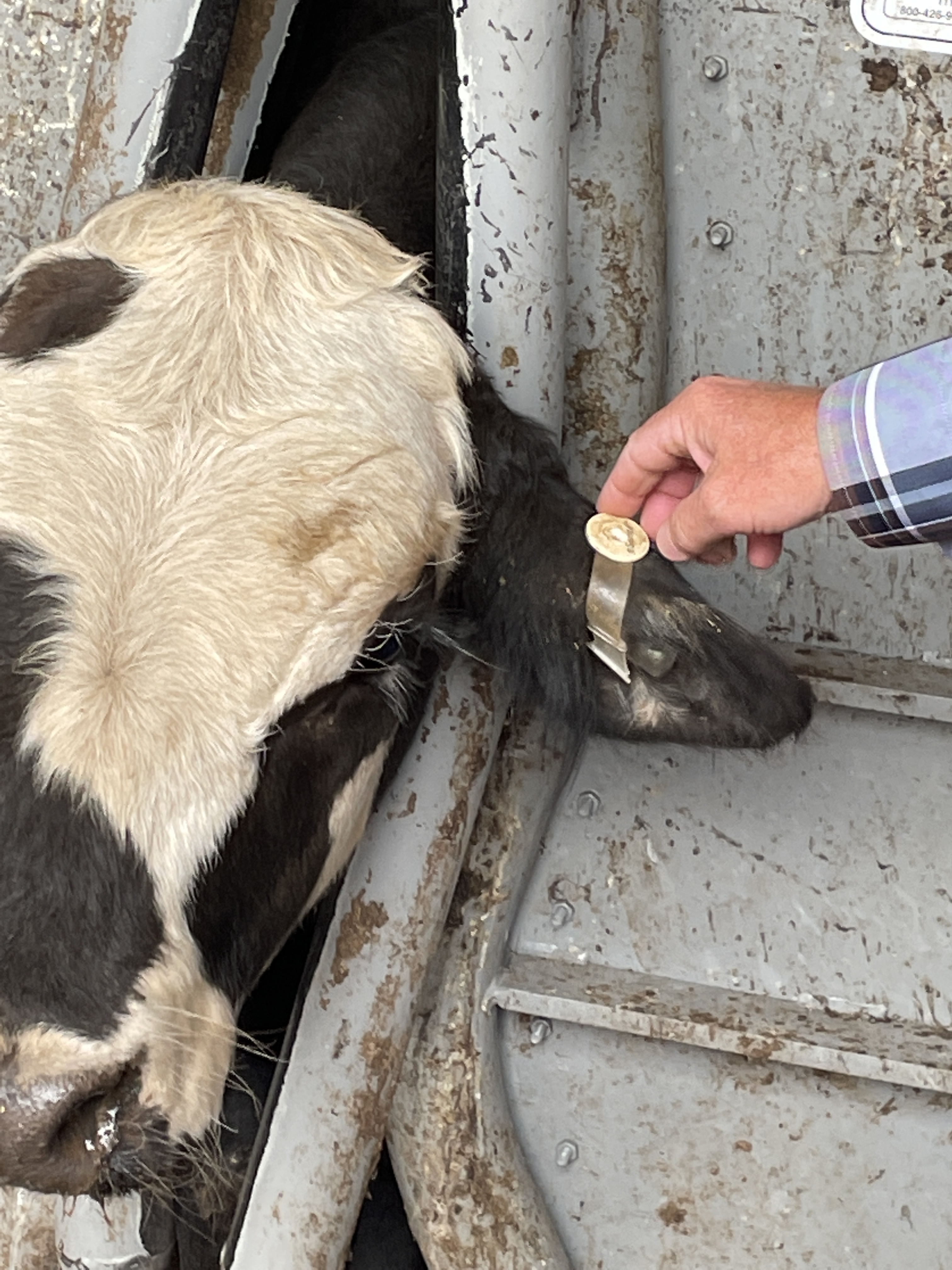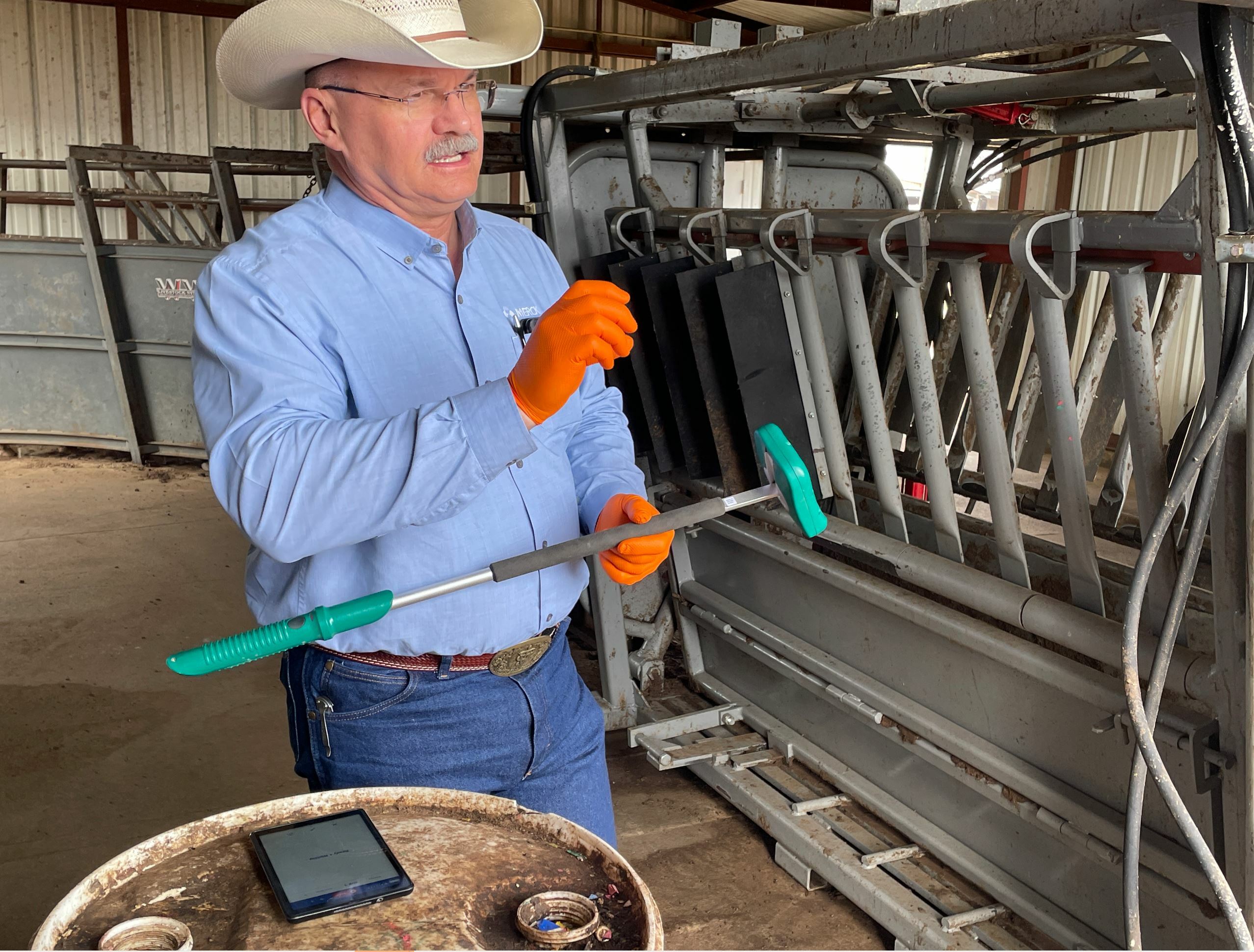



Merck Animal Health shares progress about two new cattle products
Learn more about new products to detect feedlot illness, like BRDDemonstrating innovative approaches to detecting illness and ways to help with feedlot management of bovine respiratory disease (BRD), Merck Animal Health personnel and a feedlot owner shared their results with SenseHub Feedlot and WHISPER ON ARRIVAL recently in Amarillo, Texas, and Vega, Texas.
SenseHub Feedlot is an electronic ear tag that tracks behavioral and biometric data to monitor the health of each animal. Using data it collects, SenseHub Feedlot applies machine learning algorithms to identify calves that vary from baseline norms. Daily pull lists are sent to feedlot employees’ mobile devices and computers. These lists identify individual animals that need further assessment. At the same time, an LED light on potentially sick animals’ tags flashes, making them easier for pen riders to spot them and pull them for appropriate treatment.
WHISPER ON ARRIVAL is a specialized sound collection tool that uses a predictive algorithm. When placed on a calf in the processing chute, the device analyzes its lung sound, heart sound, rectal temperature and weight, then delivers actionable data to feedlot managers and veterinarians for making health decisions for individual animals.
The predictive algorithm calculates each animal’s risk of sickness. Feedlot personnel can use this data to determine which calves may benefit from antimicrobial therapy. They can then leave those at reduced risk of disease untreated and ensure responsible antibiotic use.
“WHISPER ON ARRIVAL is an evolution of the original WHISPER technology which was used on sick cattle,” says Jason Nickell, DVM, PhD, DACVPM, director of insights and outcomes with Merck Animal Health. “The whole objective is to predict an individual animal’s risk of developing bovine respiratory disease at some point downstream. As an industry we’ve become more refined about how we apply metaphylaxis. WHISPER ON ARRIVAL uses different pieces of data to predict an individual animal’s risk. We use that information to make medical decisions that result in good treatment for the cattle and cost savings.”
Continuing this good treatment for cattle is one objective of SenseHub Feedlot. Another is continual monitoring of them.

“SenseHub Feedlot is a wearable technology applied as an ear tag that captures animal activity and body temperatures simultaneously,” Nickell says. “Using artificial technology, it identifies an animal that is different from its historical performance and different than that of the group. Once an animal is identified by the system, it is included in a daily report, complete with ID and pen numbers. These, along with the flashing LED in the ear tag, help employees find the potentially sick calves quickly.”
By no means does the product replace the need for human support.
“Technologies like these are not substitutes for human labor,” Nickell says. “Rather, they’re an augmentation to their work and another tool to make their day more efficient and allow them to be more productive and do what’s best for the cattle.”

Proof in the feedyard
The technologies are working on the ground. Robby Kirkland, owner of Kirkland Feedyard in Vega, Texas, is observing better cattle health and improved identification of potentially sick calves in the nine months since his crew began using SenseHub Feedyard. He credits the success to employees.
“We started talking with pen riders months before we started using these new tags,” he says. “We wanted to be sure everyone understood that this is a tool to help our customers. Once the tags were here, there were no surprises by any of us.”
The proof is in the numbers. Kirkland says their pull-to-dead ratio has improved by more than 60 percent since they’ve incorporated the tags.
This is consistent with what research data shows. Nickell says the system reduces overall mortalities, crews see better treatment responses and they keep more animals in the feeding cycle than before the product use started.


